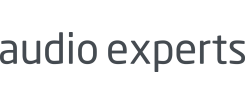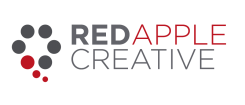Digital audio: Principles for creative best practice
-
Principle 1. Ensure your audio brand is consistent with all of your other marketing
-
Principle 2. Add to the user experience by understanding different audio platforms
-
Principle 5. Think about bespoke digital audio creative; don't just cut & paste from elsewhere
Principle 1. Ensure your audio brand is consistent with all of your other marketing
Tim Cowland, Co-Founder, Radio Experts
The last 10 years have seen an awakening in how advertisers view their sound as part of their brand.
It makes sense. Our digital lifestyles mean that brands are making noise all the time all day every day. We hear brands all the time on our headphones, music streaming, videos, Amazon Echo, branded content, social media, experiential projects, podcasts, digital outdoor, mobile and of course radio and digital audio advertising. The average Londoner is exposed to a huge number of advertising messages a day, most have an audio component.
It is vitally important to a brand’s effectiveness, control, consistency and sustained early recall that it delivers an audio brand that is consistent with all of its other marketing.
Too many brands still struggle with delivering a truly joined-up approach to their audio brand. This means that when they make ‘noise’, sometimes ‘noise’ is all they’re making. However, many brands are doing a superb and congruous job with their audio brand. The McDonalds “I’m loving it” audio brand is pitch perfect in every way, but it also shows how simple it can be to stop, consider and create a pitch perfect audio brand.
Use an expert company for your audio branding, have brand rules, have a system, have expectations, make an investment and include your audio brand in your branding guidelines. By following these steps, you will create audio articulations of your brand that fit in and keep pressing your brand home.
Principle 2. Add to the user experience by understanding different audio platforms
Leo Goldingham, Key Account Manager, Acast
Digital audio users are likely to be listening via headphones, enabling the use of 3D audio and binaural sound. Unlike traditional audio, digital audio adverts do not need to shout to be heard. The listener is more likely to be engaged and can hear the advert better, enabling high quality adverts with a more measured and considered style.
Crucially, across digital audio there are far fewer commercial messages than radio, meaning there is less clutter. Subsequently, memorable jingles are not always required. As listeners are exposed to fewer commercial messages overall, they are more likely to remember messaging meaning more subtle and complex narratives can be explored creatively.
Digital audio affords advertisers a large data pool by nature, your creative messaging and style should reflect the environmental, habitual and incidental content data you have available. For example, a different tone should be taken when advertising on Acast’s “Comedy” vertical compared to Spotify’s “RapCaviar”. The listeners are there for different reasons, and creative should reflect that.
A selection of best practice audio can be heard here and here.
Principle 3. Explore the creative and execution possibilities of the audio platform before deciding format and copy length
Kathleen Moroney, Global Head of Creative and Content, Red Apple Creative
The digital audio space is an exciting playground of possibilities, so make it your business to find out about all of the capabilities of the platform before you ideate.
Some possibilities in digital audio include:
-
Sequentially retargeting (allowing you to tell a story with multiple pieces of copy).
-
Building bespoke audience segments.
-
Targeting in moments (such as working out).
Effective advertisers always lead with ideas based on the platform they are using before planning advertising executions.
A great example of how this can increase brand engagement is a campaign we worked on using musical genre targeting.
Using listener insights, advertisers can create different copy and split their ad messages by different genres. In this particular campaign, an advertiser used psychological research into the links between the audience’s personalities and musical tastes to tailor their messages by genre.
This strategy delivered a CTR that was 600% higher than average, making it one of their most successful campaigns to date.
Principle 4. Take advantage of the lack of visuals!
Tim Cowland, Co-founder, Radio Experts
Ah…the lack of visuals. It’s the most challenging thing about audio advertising isn’t it? So many brands can tell you all day long what they look like but ask them what they sound like and...ironically, you get silence. It’s that exact difficulty that explains why creating sound for brands is such a powerful opportunity.
When we read books we don’t bemoan the lack of visuals. We recognise it is a strength. We understand that a picture we paint with our own imagination is altogether deeper, more personal and more memorable. A lack of visuals is hard to imagine creatively but the power of voice, sound and music is magic dust to a brand when used well.
So, next time you are working on creating audio for a brand, make sure you play to the intimacy of headphones, the humanity of voice and the power of a listener's own imagination.
Speak to a listener as if they’re the only person you’re speaking to and let them make the pictures for themselves. Take advantage of the lack of visuals! Good audio is theatre of the mind. Use an expert audio company, empower them with budget, time and patience and the results will be extraordinary.
It all reminds me of an ad from a few year’s back that started with the line “this is the sound of a tiny Kung-Fu expert trying to break out of a paper bag……”
Principle 5. Think about bespoke digital audio creative; don't just cut & paste from elsewhere
Kathleen Moroney, Global Head of Creative and Content, Red Apple Creative
Why tell you, when we could just show you? Here's an example of how to put it into practice:
SFX: ATMOSPHERIC DRONE/HEARTBEATS.
MUSIC: EPIC MUSIC BUILDS.
MALE VO: Introducing…. Principle… 5!
SFX: CROWD GOES WILD.
MUSIC: ELECTRO BEATS.
FEMALE VO: When considering your audio creative, it's important not to cut and paste from other platforms. Print shouldn't be lifted into audio, in the same way an audio script would be out of place in a printed best practice guide…
STRANGER I see what she's done here...
IN DISTANCE:
FEMALE VO: Traditional broadcast needs to grab a listener's attention, conversely digital audio is generally consumed by an engaged audience through headphones.
Have fun with immersive audio for headphone consumption, take advantage of data to target specific segments with personalised messaging and always write your scripts considering the fact that you literally have your audience's ear.
FVO WHISPERS INTO LEFT EAR (HARD PAN LEFT)
FEMALE VO: And you don't get much closer than that.
SFX: KLAXON.
FEMALE VO: So, don't make it jarring. Sculpt the creative to fit each platform and make your call to action relevant, making every media penny work as hard as possible for your brand.
Click the banner now to find out more.
Contributors



Topics
Related content
Native distribution: Principles for creative best practice
Learn moreAn introduction to creative best practice
Learn moreGeneral principles for creative best practice
Learn moreDigital content creation: Principles for creative best practice
Learn more
Fast forward to 2030 with Futurescape
An in-depth exploration of the attitudes, innovations and media shifts that will shape the years ahead and redefine how we advertise by the turn of the decade



